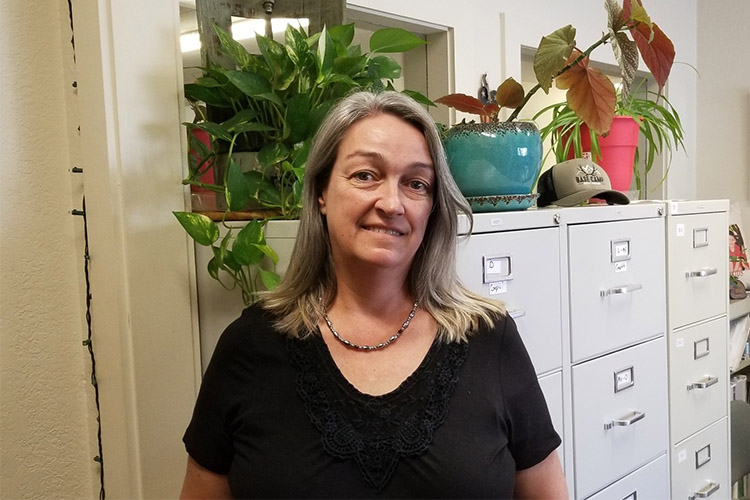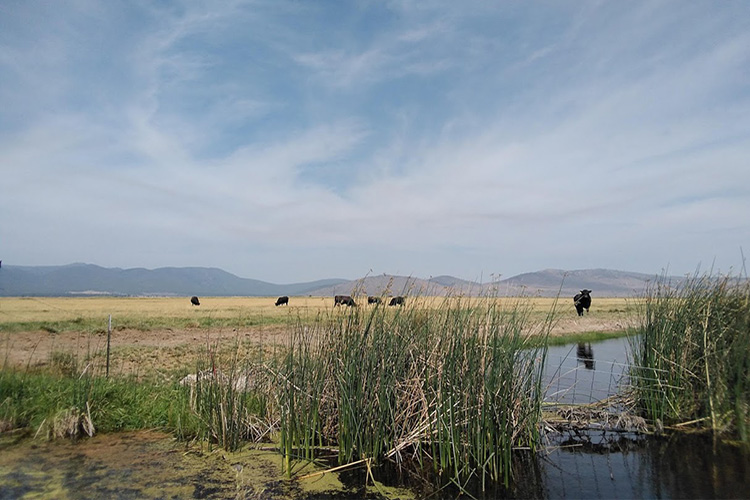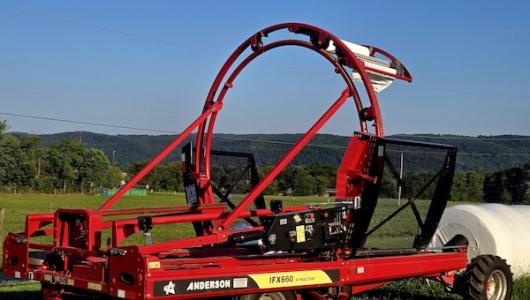In this Ask the Expert, Anne Stephens answers a few questions about USDA programs and opportunities for people who are new to agriculture due to the COVID-19 pandemic. Anne is the district conservationist for USDA’s Natural Resources Conservation Service in Susanville, California. Her career has taken her to four states and over 16 counties, each with its own resource concerns.
Anne, like other USDA employees, is committed to building trusting relationships and serving local producers and partners. She empowers her local team to assist clients with developing conservation plans that protect natural resources while helping achieve the clients’ operational goals.

I’ve just bought land, and I want to farm. How do I know which parts of the land are the best to farm?
Congratulations on your purchase! The best place to start learning about your property is through the Web Soil Survey, which provides access to the largest natural resource information system in the world.
You can print a map with basic soil data or generate detailed reports based on research and inventory data, which has been gathered since the early 1930s. Once your property has been delineated on the aerial map, you can use the Soil Data Explorer to learn about its suitability and limitations for farming and other uses.
When you request assistance from your local USDA Service Center, staff from NRCS and partners will help you gather initial soils data. After baseline data is generated, someone from our staff will conduct a site visit and inventory the resources and potential resource concerns on your land. During the inventory, we will learn more about your goals and objectives.
How do you get the land that hasn’t been farmed before ready for planting?
To set yourself up for success, the first step is to complete an inventory and develop a conservation plan. NRCS has a long history of working with conservation districts to protect our nation’s natural resources. We assist our clients in developing conservation plans using the Nine Step Conservation Planning Process.
Farming is always evolving, so however you plan your operation, expect things to change. As the growing seasons roll on, you will become more familiar with the intricate details of your land, and your partnership with land should find harmony.
The Web Soil Survey is a great place to start, but I recommend going a little further. NRCS planners can show you how to conduct experiments at your farm to test soil health. If you want to go the extra mile, soil testing centers are available everywhere in the country for a reasonable cost. Your local university should have information available on testing centers in your area.
As part of applying for USDA programs, farmers must meet conservation compliance, meaning they need a conservation plan in place if their soil is considered highly erodible, or if land is determined to be a wetland, it might not be farmable. As part of applying, NRCS helps check for highly erodible soil and wetlands.

How do you get land that hasn’t been farmed in many years ready for farming?
You need to explore the history of your land. Does your field flood in the spring? What crops have been grown there? How did the irrigation system work? Which years were good? Which were bad? Why? You may have to start from scratch, but whatever history you can gather from others before you break ground could make a meaningful difference on the success of your new farm.
Network with local agricultural producers, cooperative extension and conservation groups to learn about what people are doing in the area that has been successful or a challenge. Local producers have the inside scoop on topics such as resource availability, markets and more that many of us don’t have the same exposure to. An inventory of equipment options would be helpful. Many new owners in my area lease their land or contract specific operations to help offset the labor and expense to rejuvenate agricultural lands.
I’ve read about soil health. Are soil health practices important, and if so, why?
Crops planted in healthy soil will prosper. I believe that farmers don’t grow plants, the plants grow themselves. Farmers are responsible for fostering an environment where their crops will thrive. This means managing their field for a rich and bountiful soil.
Soil is alive. A healthy soil is teaming with microscopic organisms that feed on old dead plant material and defecate the nutrients that plants crave. These organisms bind the particles of the soil together in patterns that capture and hold water and air. This soil structure improves the efficiency of irrigation water, prevents the formation of hard layers of clay and keeps your soil from washing off your field when it pours rain.
During the Dust Bowl in the 1930s, farmers didn’t know the importance that soil health played in the success of their business. Since then, American farmers have worked to develop modern and innovative agricultural systems to promote healthy life in the soil. NRCS planners at your local USDA Service Center are trained in these methods and are available to help you plan your farm around soil health.
I am just getting started, and funding is tight. How can USDA help me?
USDA offers a variety of funding opportunities to help farmers, ranchers and forest landowners finance their businesses.
In addition to the financial assistance that NRCS offers to landowners, loan programs from USDA’s Farm Service Agency can help secure land, finance the purchase of equipment and more. Learn more about funding options on farmers.gov.

I just bought land. I’m not sure I want to farm it. Are there other USDA programs that can help me manage the land so it’s beneficial to my operation and natural resources?
If you don’t want to farm all of your land, you can look at either a conservation easement or managing for native shrubs and grasses through either the Agricultural Conservation Easement Program or Conservation Reserve Program. Easements are long term, while a CRP contract is 10-15 years. These are good options for landowners with land that is not optimal for production or sensitive lands like wetlands and grasslands.
I just bought forested land. Can USDA help me improve the health of forests?
Yes! Developing conservation plans for private forest land can include reducing fuels to lessen the risk of catastrophic wildfire, improving forest health, water quality and wildlife habitat, and, after a fire, restoring forest lands. We can help you implement practices that are good for the health of the forest, which is good for your bottom line, wildlife and resiliency.
Lauren Moore is a public affairs specialist for USDA’s Farm Production and Conservation Business Center.


